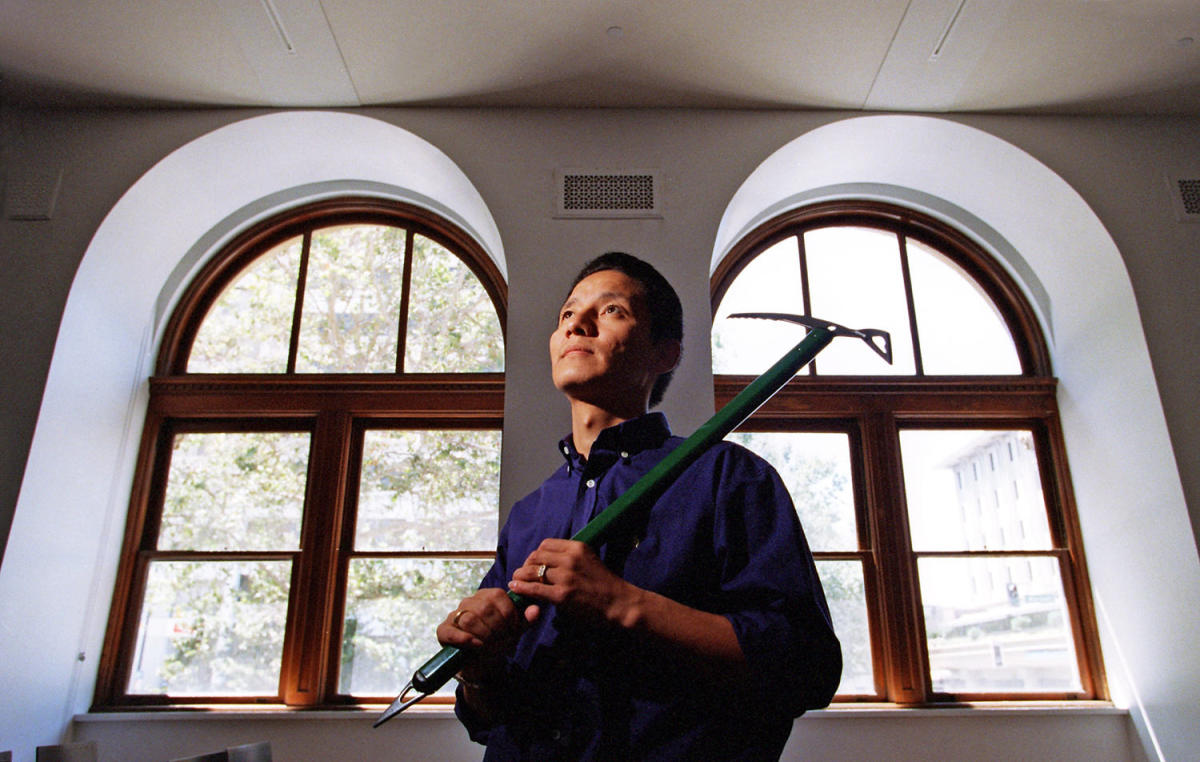HONG KONG — Some families go on vacation to the beach, others visit big cities. Jamling Tenzing Norgay’s family climbed mountains.
“We hiked to some beautiful ridges. That’s what we did all the time, with my dad,” he said Tenzingwhose father, Tenzing Norgay, was a Nepali-Indian Sherpa who in 1953 became one of the first two confirmed people to summit Mount Everest along with New Zealand climber Edmund Hillary.
Tenzing’s father instilled in him a passion for mountain climbing from an early age.
“Ultimately, I wanted to try to climb Everest because I looked up to my father as my biggest role model,” Tenzing, 59, told NBC News in an interview in Hong Kong this month. “He was my hero, and I wanted to be just like him.”
Tenzing achieved his Everest dream in 1996, reaching the summit of the 29,032-meter mountain.
“I trained very hard and trained very well, physically and mentally,” he said of his climb, which was documented in the 1998 IMAX film “Everest.” “I’ve been preparing for this climb my whole life.”
Mount Everest has “changed a lot” since his father climbed it in 1953, Tenzing said. Equipment has become lighter and more advanced and communication is much easier.
That has made the mountain more accessible, but also much busier. In recent years, viral photos have shown long lines of climbers snaking down from the summit.
When there are delays, “accidents happen,” Tenzing said. “More people are dying on the mountain because there are too many people up there.”
Tenzing’s 1996 climb coincided with what was then the deadliest year ever on Mount Everest. Twelve climbers died during the spring climbing season, including eight who were caught in a snowstorm on the way down.
Eight climbers have been killed or missing this year, compared to 18 in 2023.
Tenzing and others like Kami Rita, a Sherpa guide who climbed Mount Everest for the 30th time last month, have also raised concerns about the mountain’s waste problem. The Nepalese army said after completing its annual clean-up campaign this month that it had removed about 11 tonnes of rubbish, four human bodies and one skeleton from Mount Everest and two other Himalayan peaks.
New rules this year required climbers to clean up their own feces, which doesn’t completely break down on the icy mountain.
That didn’t stop the 421 climbers who were granted permits this year, up from a record 478 in 2023. These numbers don’t include guiding Sherpa and other support staff.
“People will still continue to come, and I think the number of climbers coming will grow in the future, which is not good,” said Tenzing, whose 2002 book “Touching My Father’s Soul” recounted his 1996 ascent of Everest and sheds light on the Sherpa experience.
An experienced mountaineer, Tenzing has guided climbers of varying levels of experience through the Himalayan region on long treks and mountain expeditions. One of the things he enjoys most about it, he says, is talking about the local history and culture, including stories about his father’s historic climb.
“I am proud to be in my country,” he said, “in a country where people enjoy themselves and keep coming back.”
This article was originally published on NBCNews.com
